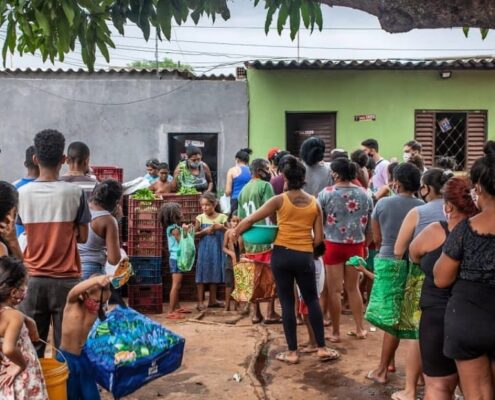 https://greenmarked.it/wp-content/uploads/2023/10/gregory-atkats-1AyFNfFkrNA-unsplash-scaled.jpg
1502
2560
Paula Ruiz del Coro
https://greenmarked.it/wp-content/uploads/2022/01/LOGO-GREENMARKED-SITO-600x600.png
Paula Ruiz del Coro2023-10-01 18:06:212023-10-01 19:19:29Cats and Other Invaders: A Threat to Local Biodiversity
https://greenmarked.it/wp-content/uploads/2023/10/gregory-atkats-1AyFNfFkrNA-unsplash-scaled.jpg
1502
2560
Paula Ruiz del Coro
https://greenmarked.it/wp-content/uploads/2022/01/LOGO-GREENMARKED-SITO-600x600.png
Paula Ruiz del Coro2023-10-01 18:06:212023-10-01 19:19:29Cats and Other Invaders: A Threat to Local BiodiversityOctober 14, 2022

We are in the midst of a storm: the climate crisis does not look at anybody in the face and is affecting all sectors of our economy and private lives. The severe drought that we are currently experiencing could become normality in the near future. Same could happen with other extreme weather events. More and more floods are affecting Italy at greater intensity, like the floods in the Marche region, and the world as a whole, like the floods in Pakistan in 2022, ranked as the worst in the country’s history [1].
On the one hand we have extreme weather events, on the other we have epidemics. The one that affected mankind most recently was Covid-19, but other diseases began to circulate later, like monkeypox. These epidemics are often caused by our poor coexistence with wildlife as it is increasingly deprived of its living space in favor of agriculture and urbanization. In fact, the WWF recently reported an average decline of 69% in species populations since 1970 [2].
Epidemics affect not only humans, but also animals. Recently, we published an article on the spread of swine fever, but in parallel another major epidemic is ongoing: avian influenza.
According to a report by European Food Safety Authority, the Avian Influenza outbreak (HPAI) in the period between June and September 2022 was the largest observed in Europe [3]. The numbers speak for themselves: nearly 50 million farm birds culled, and more than 3500 cases found in wild birds. Cases of Avian Influenza have been detected in virtually all European states, but the most affected ones in terms of outbreaks on farms is France (1383) followed by Italy (317).

Fig. 1: When the virus is found on a farm, poultry must often be culled through foam suffocation. Photo by Roee Shpernik, CC BY-SA 4.0 [4].
If swine fever, affecting land animals, is somewhat manageable by isolating areas where outbreaks are detected, avian influenza is virtually impossible to keep under control. Moreover, the seasonal migrations of birds complicates the spread management: in December 2021, H5N1 and HHPAI viruses were detected in farm birds and wild gulls in Canada, St. John’s – Newfoundland and Labrador [5]. This means that bird migration carried the virus across the Atlantic, which had last been recorded in North America in 2015.
The risk of spillover (i.e., transmission to other species) to humans exists, but is classified by EU’s agencies as low. Despite the low risk to humans, this serious situation should also make us think about our eating habits. Intensive farms (of poultry, for example) are perfect for the spread of the virus, and we easily understand how reducing or eliminating our meat consumption could make a difference.
Related articles:
References:
[1] Wikipedia contributors. (2022, October 12). 2022 Pakistan floods. Wikipedia. Retrieved October 13, 2022, from https://en.wikipedia.org/wiki/2022_Pakistan_floods
[2] Living Planet Report 2022. (2022, October 12). WWF. Retrieved October 14, 2022, from https://wwflpr.awsassets.panda.org/downloads/lpr_2022_full_report.pdf
[3] Adlhoch, C., Fusaro, A., Gonzales, J. L., Kuiken, T., Marangon, S., Niqueux, R., Staubach, C., Terregino, C., Guajardo, I. M., Chuzhakina, K., & Baldinelli, F. (2022, October). Avian influenza overview June – September 2022. EFSA Journal, 20(10). https://doi.org/10.2903/j.efsa.2022.7597
[4] File:Avian influenza roee shpernik 10.jpg – Wikimedia Commons. (2016, December 1). Retrieved October 14, 2022, from https://commons.wikimedia.org/w/index.php?curid=54534632
[5] Caliendo, V., Lewis, N. S., Pohlmann, A., Baillie, S. R., Banyard, A. C., Beer, M., Brown, I. H., Fouchier, R. A. M., Hansen, R. D. E., Lameris, T. K., Lang, A. S., Laurendeau, S., Lung, O., Robertson, G., van der Jeugd, H., Alkie, T. N., Thorup, K., van Toor, M. L., Waldenström, J., . . . Berhane, Y. (2022, July 11). Transatlantic spread of highly pathogenic avian influenza H5N1 by wild birds from Europe to North America in 2021. Scientific Reports, 12(1). https://doi.org/10.1038/s41598-022-13447-z
Cover- and preview image: Engin Akyurt, Pexels, freely licensed for commercial use.










